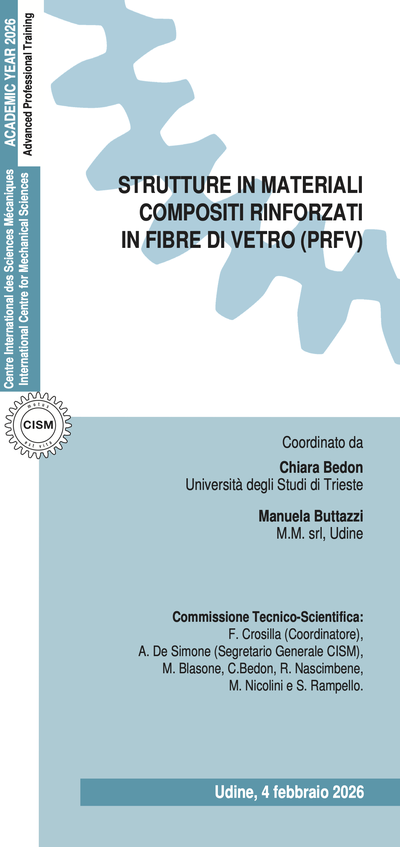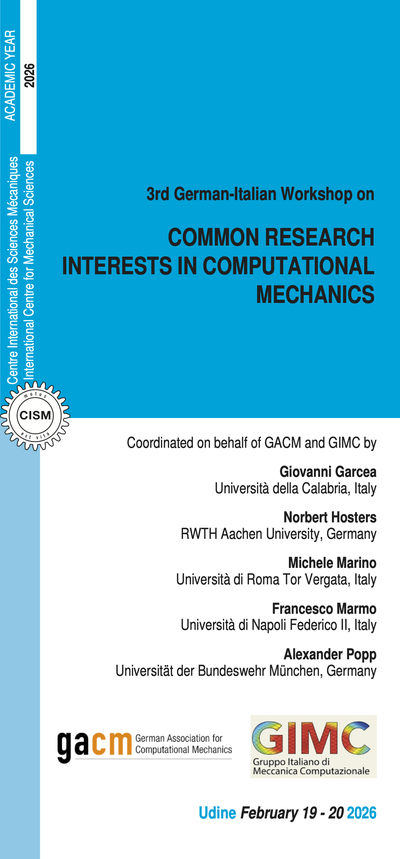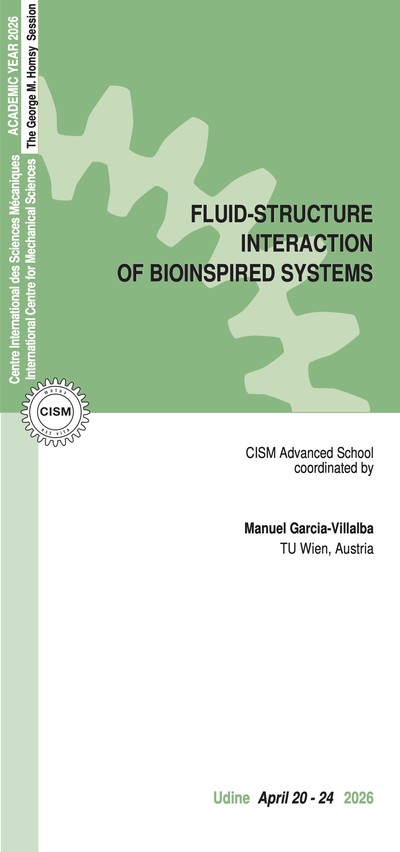Gravitational instabilities such as debris flows and landslides play a key role in erosion processes and represent one of the major natural hazards threatening population and infrastructures all over the world. They are also closely related to volcanic, seismic, and climatic activity and thus represent potential precursors or proxies for the time change of these activities.
One of the ultimate goals of research on gravitational mass flows is to produce tools for detection of landslides and for prediction of their velocity and runout extent. The theoretical description and physical understanding of these processes are extremely challenging problems. In recent years, significant progress in the mathematical, physical, and numerical modelling of gravitational flows, as well as advances of monitoring techniques, have made it possible to develop and use numerical models to investigate process dynamics and assess associated risks. However, key questions still remain unanswered, for instance concerning the reason for the high mobility of natural landslides.
Two severe limitations prevent a full understanding of landslide dynamics. First, the mechanical behavior (rheology) of these flows is still an open issue and the resulting mathematical and numerical models are oversimplified and not always well-posed. In particular they do not take into account complex natural phenomena such as interaction of fluid and solid phases, cohesion or fragmentation. Secondly, field measurements relevant to the dynamics of natural landslides are scarce due to the unpredictability and destructive power of such events, making it nearly impossible to validate the description of the physical processes in the models. In this context, the analysis of the seismic signal generated by these instabilities provides a unique tool to recover information on flow dynamics.
The Advanced School provides an overview of the state-of-the-art in these different fields going from the behavior of granular material involving cohesion, fragmentation, presence of a fluid-phase up to the behavior of landslides at the field-scale and their interaction with climatic, seismic, volcanic, and human forcing. The courses will span from theoretical work on granular flow models, experimental work on granular flows, discrete and continuum simulations up to field measurements as well as inversion of the generated seismic waves. A focus will be made in each field on the limitations and complementarity of the different approaches and on the open issues.
Two poster and brainstorming sessions dedicated to:
1) physics and rheology of lab-scale granular flows;
2) measurements and simulation of field-scale landslides.
The brainstorming sessions will more particularly address the two challenging issues, which play a key role in the description of natural gravitational flows:
1) What are the limits of the current rheological laws such as μ(I) when applied to describe transient flows?
2) Which processes can be at the origin of the unexplained high mobility of natural landslides?
We expect that confronting the different and possibly contradictory points of view of the speakers and assembly on these issues will make it possible to identify original research directions in physics, mechanics, modelling and field measurements.
The Vajont field trip will focus on the biggest landslide-related disaster in Italian modern history. On October 9th, 1963, a devastating landslide occurred in the valley of Vajont, Italy. After filling the reservoir behind a recently built dam, around 250-300 Mm³ of rock and debris detached and slit into the reservoir. The resulting flood wave overtopped the dam and destroyed settlements and infrastructure along the way, causing more than 2,000 casualties. During the field trip we will visit the dam and the landslide as well as the Museo Longarone Vajont.
Crosta, G.B., Agliardi, F., Frattini, P., and Sosio, R. Landslide triggering mechanisms in Europe – Overview and State of the Art. Safeland Project Report, 378 pp, (2012).
Delannay, R., Valance, A., Mangeney, A., et al. Granular and particle-laden flows: from laboratory experiments to field observations. Journal of Physics D: Applied Physics, 50(5), 053001, (2017).
Gariano, S. L., & Guzzetti, F. Landslides in a changing climate. Earth-Science Reviews, 162, 227–252, (2016).
Guazzelli, É. & Pouliquen, O. Rheology of dense granular suspensions. J. Fluid Mech. 852, (2018).
Kaitna, R., Palucis, M. M., Hill, K. M., et al. Effects of coarse grain size distribution and fine particle content on pore fluid pressure and shear behavior in experimental debris flows. Journal of Geophysical Research: Earth Surface, 1, 27, (2016).
Kilburn, C. R. J., & Petley, D. N. Forecasting giant, catastrophic slope collapse: lessons from Vajont, Northern Italy. Geomorphology, 54(1), 21–32, (2003).
Moretti, L., Mangeney, A., Walter, F. et al. Constraining landslide characteristics with Bayesian inversion of field and seismic data. Geophys. J. Int. 221, 1341–1348, (2020).
Rocha, F. M., Johnson, C. G. & Gray, J. M. N. T. Self-channelisation and levee formation in monodisperse granular flows. J. Fluid Mech. 876, 591-641, (2019).
Rao, K. Kesava, & Nott, Prabhu R. An Introduction to Granular Flow, Cambridge University Press, (2008).
Radjai, F., Roux, J.-N. & Daouadji, A. Modeling granular materials: century-long research across scales. J. Eng. Mech. 143, 04017002, (2017).
Prabhu Nott (Indian Institute of Science, Bangalore, India)
6 lectures on: Rheology of granular flows and well-posedness of the models.
Slow, rapid and intermediate flow regimes, rheological models for slow and rapid flows, hybrid models for the intermediate regime, well-posedness and ill-posedness of the models, linear stability of simple flows.
Olivier Pouliquen (University of Aix-Marseille, France)
6 lectures on: Fluid and cohesion effects in granular flows.
Rheology of granular suspensions, single-phase approach, two-phase modeling, pressure-imposed versus volume-imposed rheology, effects of cohesion between the particles.
4 lectures on: Field measurements of debris flows and landslides.
Overview of existing monitoring sites, direct or derived measurement of basal stress, pore fluid pressure, impact forces, velocity profiles, densities, grain-size distributions or erosion processes.
4 lectures on: Landslides and waves: from laboratory- to field-scale.
Lab-scale granular flows and generated acoustic waves, depth-averaged and multi-layer models of grain-fluid flows and tsunami waves, signature of landslide characteristics on the generated seismic waves.
see Nico Gray's lectures
4 lectures on: Landslides interaction with climatic, volcanic, and seismic forcing.
Temporal and spatial distribution of landslides; strength and sensitivity; thresholds and effective stress, liquefaction and rapid changes in mechanical properties, hydrothermal effects, spatial disruption of seismic forcing, post-seismic recovery.
see Elisabeth Guazzelli's lectures
4 lectures on: Grain fragmentation: physical processes and discrete element simulations.
Physics of particle breakage, rheology and discrete element simulation of granular materials involving breakable particles, influence of particle fracture on rheological properties such as internal friction and dilatancy.
ADMISSION AND ACCOMMODATION
The course is offered in a hybrid format giving the possibility to attend the course also by remote (on Microsoft Teams platform). On-site places are limited and assigned on first come first served basis.
The registration fees are:
On-site participation, 600.00 Euro + VAT*
This fee includes a complimentary bag, five fixed menu buffet lunches, hot beverages, downloadable lecture notes.
Deadline for on-site application is September 2, 2023.
Online participation, 250.00 Euro + VAT*
This fee includes downloadable lecture notes.
Deadline for online application is September 20, 2023.
Application forms should be sent on-line through the following web site: http://www.cism.it
A message of confirmation will be sent to accepted participants.
Upon request a limited number of on-site participants can be accommodated at CISM Guest House at the price of 35 Euro per person/night (mail to: foresteria@cism.it).
* where applicable (bank charges are not included) Italian VAT is 22%.
CANCELLATION POLICY
Applicants may cancel their registration and receive a full refund by notifying CISM Secretariat in writing (by email) no later than:
- September 2, 2023 for on-site participants (no refund after the deadline);
- September 20, 2023 for online participants (no refund after the deadline).
Cancellation requests received before these deadlines will be charged a 50.00 Euro handling fee. Incorrect payments are subject to Euro 50,00 handling fee.
GRANTS
A limited number of participants from universities and research centres who are not supported by their own institutions can request the waiver of the registration fee and/or free lodging.
Requests should be sent to CISM Secretariat by July 27, 2023 along with the applicant's curriculum and a letter of recommendation by the head of the department or a supervisor confirming that the institute cannot provide funding. Preference will be given to applicants from countries that sponsor CISM.





